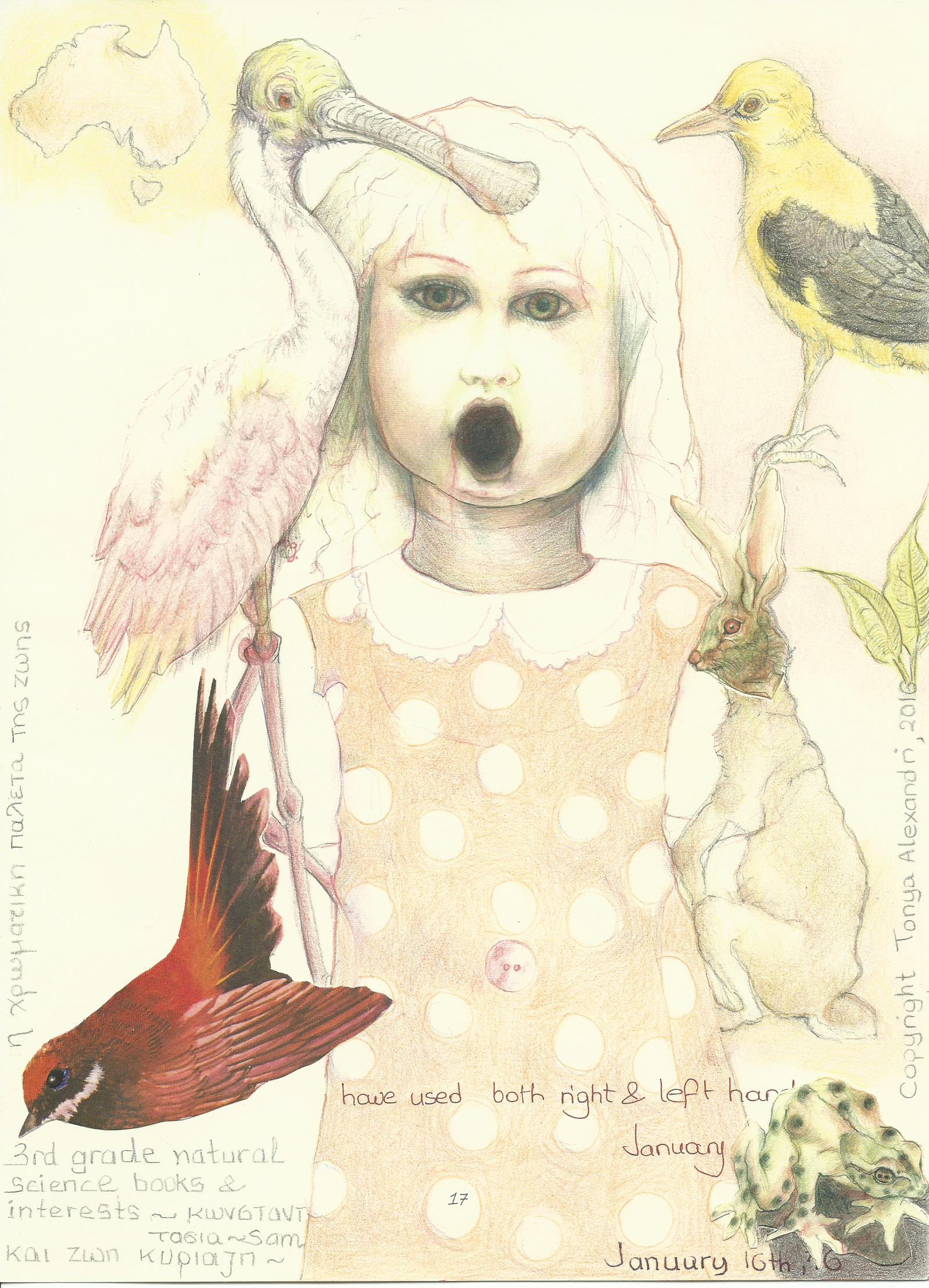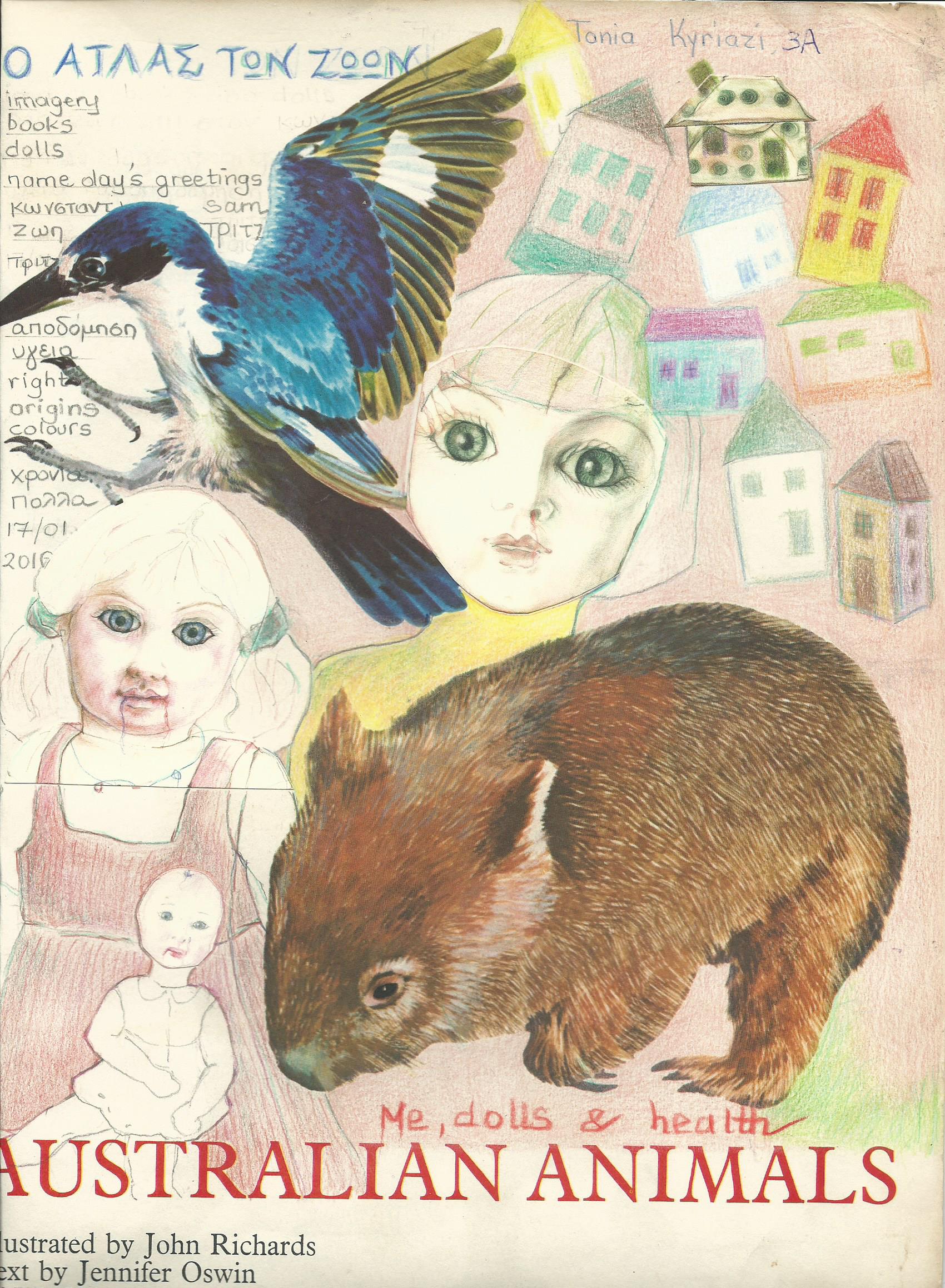 ‘The littlest birds sing the prettiest songs’ (lyrics from The Be Good Tanyas’ song)
‘The littlest birds sing the prettiest songs’ (lyrics from The Be Good Tanyas’ song)
Old books and visual journals
Art journaling and writing in a diary is like opening a window into our mind and body. Cathy Malchioldi writes ‘art journaling is about having a conversation with yourself’. Journaling, whether through images, words or both, allows access to emotions and experiences and can increase our insight and resilience through the processes of reframing and integrating stressful and traumatic experiences. Also, engaging with visual journaling and writing may actually directly and positively impact our hippocampus, which is one of the integrative brain areas responsible for situating experiences in time and place. Furthermore, as I wrote in a previous post, James Pennebaker’s research findings suggest that writing is beneficial and can actually strengthen our immune system. C. Malchiodi (2013) writes that art therapist, Elizabeth Warson, who has researched the benefits of visual journaling, has also found that art journaling can be beneficial and can enhance our well-being. James Pennebaker claims that ‘writing about an event does not only translate the experiences into language, but also performs another important healing function. Creating written narrative may actually begin the process of detaching from intrusive thoughts and putting upsetting feelings (sensory memories) into a chronology. Rather than remaining a disturbing mixture of free floating emotions, experiences are placed in an objective historical context’ (James Pennebaker, cited in Cathy Malchiodi, 2013, retrieved from www.psychologytoday.com/sites/default/files/attachments/231/visual-journal-pages. pdf).
All types of old books can become the canvas of visual journaling and different books lend themselves to different projects. Books from second hand stores, old children’s books and school text books can all serve this purpose. Also, books that have had an influence on us can become the canvas of our creativity and expressive writing. Turning books into art journals can be a simple or more elaborate procedure and there are many sites, books and blogs with instructions on how to transform old books into art journals. Some suggest using a white primer to cover some of the images or part of the print of the old books to provide space to draw or write on. Tearing out pages, sticking pages together and then using a white primer can allow you to create a diary where you can stick images and photos, paint or write on the new pages. These ‘altered books’ can become canvases for reframing our experiences and creating new narratives. This type of activity is also ideal in allowing us to spend time focused and engaged creatively. Children can also engage with art journaling and transforming their old books into small works of art, whether they are exploring trauma (I have written more on this in another post) or simply for fun and growth. However, books can also be used in their original form depending on what one aspires or desires to do. And of course, pads and cheap exercise books and sheets of paper can all allow serve as the background for our creative activities.
In the first drawing, posted above, I have directly drawn on a page from ‘Let me be’ as a way of unpacking the symbols I used in the past, in order to increase clarity and create new meaning informed by deeper understanding. The second art journal page above is created on the front page of an old childhood favourite 70s edition book on wildlife, ‘Australian Animals’ – illustrated by John Richards and written by Jennifer Oswin – I assume it’s a collector’s item now. I have glued my own past images on this page and then further engaged in drawing.
Enjoy: Lovely voice and lovely accompanying video
Human Thing by ‘The Be Good Tanyas’ https://www.youtube.com/watch?v=Gd1Ie370rHk

